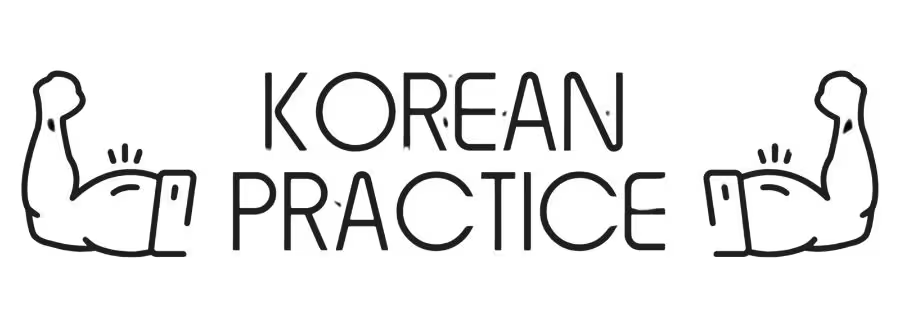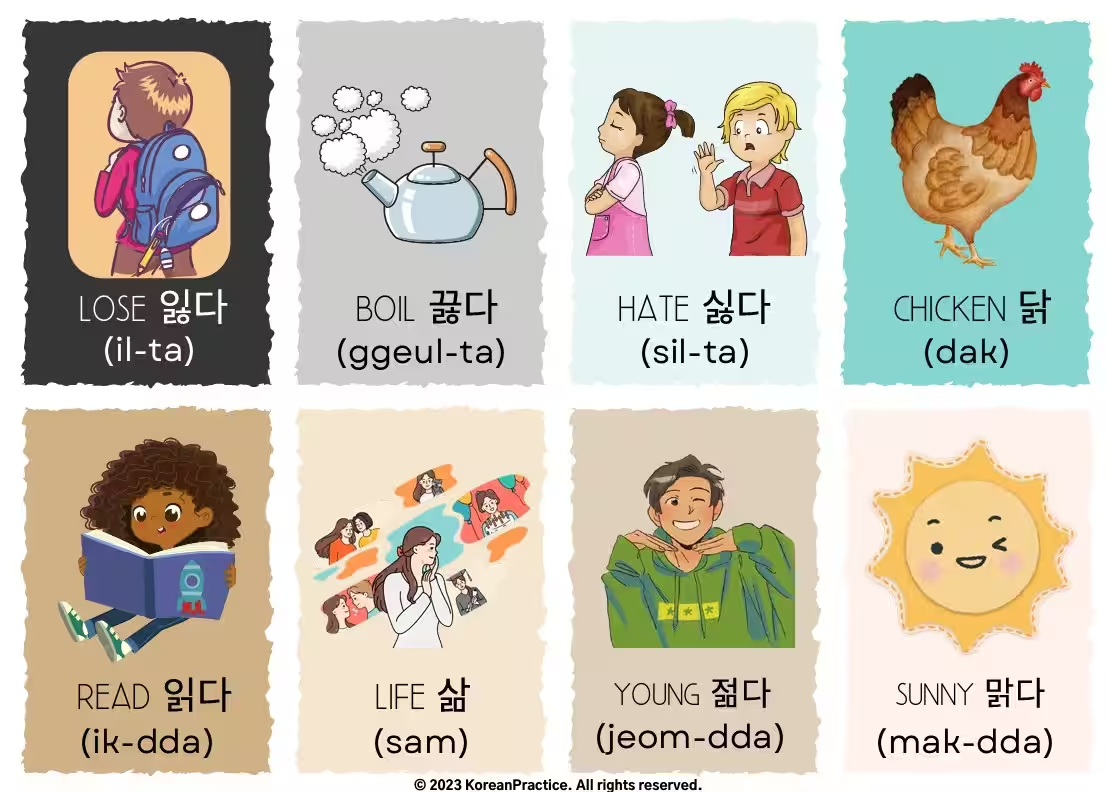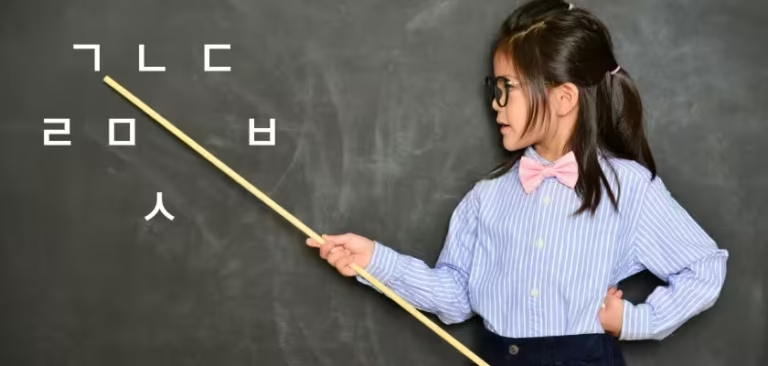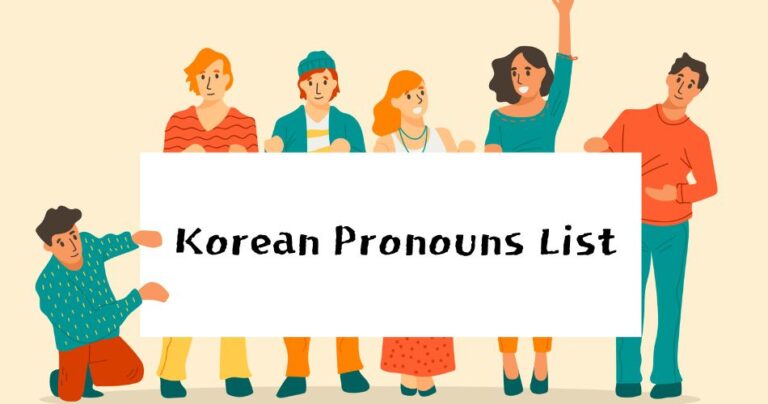Table of Contents
Basic Korean Verbs
Korean verbs are an essential part of the language, and mastering them is key to speaking Korean fluently. In this comprehensive guide, I’ll cover everything you need to know about Korean verbs, including how to conjugate them, use them in sentences, and change their tense.
Verb Endings in Korean
One of the unique features of Korean verbs is their use of verb endings. In Korean, the verb ending changes depending on the tense, mood, and politeness level of the sentence. The most common verb endings in Korean are “-다” (da) and “-어/아” (eo/a). Here are some examples:
- “먹다” (meokda) – to eat
- “먹어” (meogeo) – eat (informal)
- “먹어요” (meogeoyo) – eat (polite)
- “먹었어” (meogeosseo) – ate (informal)
- “먹었습니다” (meogeosseumnida) – ate (polite)

Conjugation of Korean Verbs
Korean verbs require conjugation based on politeness levels, formality, and tense – not based on the grammatical subject (I, you, he/she) as in English. This means that the same verb form can be used regardless of who is performing the action, but the form changes depending on how politely you want to speak and the level of formality required in the situation.
Basic Principle
For example, the verb “먹다” (meokda – to eat) conjugates the same way regardless of whether the subject is “I,” “you,” or “he/she.” Here are some examples:
Informal/Casual Speech:
- 나는 밥을 먹어 (naneun bapeul meogeo) – I eat rice.
- 너는 밥을 먹어 (neoneun bapeul meogeo) – You eat rice.
- 그는 밥을 먹어 (geuneun bapeul meogeo) – He eats rice.
Notice that the verb ending “먹어” remains exactly the same for all subjects.
Verb Conjugation Process
Korean verbs are conjugated by attaching various endings to the verb stem. The verb stem is obtained by removing the “-다” (da) ending from the dictionary form of the verb.
Example: 먹다 (meokda) → 먹 (meok) = verb stem
Common Politeness/Formality Levels
Here are the main speech levels in Korean:
1. Informal Speech (-아/-어)
- 먹어 (meogeo) – used with close friends, family, or people younger than you
2. Polite/Casual Speech (-아요/-어요)
- 먹어요 (meogeoyo) – used in most everyday situations, polite but not overly formal
3. Formal Speech (-습니다/-ㅂ니다)
- 먹습니다 (meokseumnida) – used in formal situations, business settings, or with people you don’t know well
Complete Example Comparison
Let’s see how “I eat rice” changes based on politeness level, not subject:
- Informal: 나는 밥을 먹어.
- Polite: 나는 밥을 먹어요.
- Formal: 나는 밥을 먹습니다.
The subject “나는 (I)” stays the same, but the verb ending changes based on the level of politeness/formality you want to convey.
Example Sentences:
Original Korean Sentence
나는 밥을 먹어요.
Pronunciation Guide
나는 (na-neun) 밥을 (ba-beul) 먹어요 (meo-geo-yo).
Meaning and Context
나 (I) 는 (topic marker; the sentence is about me) 밥 (rice, meal) 을 (object marker; my object is rice) 먹 (to eat) 어요 (I’m telling you polite and friendly).
English Translation
I eat rice.
Understanding Korean verb conjugation is essential for proper communication. Unlike English, you don’t conjugate based on who is doing the action, but rather based on how respectfully and formally you want to speak to your listener. Choosing the appropriate speech level shows cultural awareness and proper etiquette in Korean society.
Types of Korean Verbs
There are three types of Korean verbs: action verbs, descriptive verbs, and existential verbs.
Action verbs
Action verbs are used to describe physical or mental actions. They are conjugated based on tense, formality, and honorifics. Here are some examples of action verbs in Korean:
- 가다 (gada) – to go
- 먹다 (meokda) – to eat
- 보다 (boda) – to see/watch
- 듣다 (deutda) – to listen/hear
- 말하다 (malhada) – to speak/talk
- 생각하다 (saenggakhada) – to think
Descriptive verbs
Descriptive verbs are used to describe states or conditions. They are conjugated based on tense, formality, and honorifics. Here are some examples of descriptive verbs in Korean:
- 예쁘다 (yeppeuda) – to be pretty
- 좋다 (jota) – to be good
- 높다 (nopda) – to be high
- 많다 (manhda) – to be many
- 적다 (jeokda) – to be few
Existential verbs
Existential verbs are used to express the existence or non-existence of something. They are not conjugated and remain the same regardless of tense, formality, or honorifics. Here are some examples of existential verbs in Korean:
- 있다 (itda) – to exist
- 없다 (eopda) – to not exist
- 되다 (doeda) – to become
- 아니다 (anida) – to not be
Understanding the different types of Korean verbs can help you better understand how to use them in sentences and how to properly conjugate them based on the context of the sentence.
Watch this short story video to see Konglish in action
Irregular Korean Verbs
Like many languages, Korean has irregular verbs that don’t follow the standard conjugation rules. These verbs undergo stem changes when conjugated, making them challenging for learners. Let’s explore the most common types of irregular verbs in Korean.
Common Types of Irregular Verbs
1. ㄷ Irregular Verbs
Verbs ending in ㄷ change to ㄹ when followed by vowel endings.
듣다 (deutda) – to listen/hear
- Regular form would be: 듣어요 ❌
- Actual conjugation: 들어요 ✅
- Examples:
- 음악을 들어요 (eumageul deureoyo) – I listen to music
- 소리를 들었어요 (sorireul deureosseoyo) – I heard a sound
걷다 (geotda) – to walk
- Regular form would be: 걷어요 ❌
- Actual conjugation: 걸어요 ✅
- Examples:
- 걸어요 (georeoyo) – I walk
- 걸었어요 (georeosseoyo) – I walked
2. ㅂ Irregular Verbs
Verbs ending in ㅂ change to 우 or 워 when followed by vowel endings.
춥다 (chupda) – to be cold
- Regular form would be: 춥어요 ❌
- Actual conjugation: 추워요 ✅
- Examples:
- 추워요 (chuwoeoyo) – It’s cold
- 추웠어요 (chuwosseoyo) – It was cold
어렵다 (eoryeopda) – to be difficult
- Regular form would be: 어렵어요 ❌
- Actual conjugation: 어려워요 ✅
- Examples:
- 어려워요 (eoryeowoyo) – It’s difficult
- 어려웠어요 (eoryeowosseoyo) – It was difficult
3. ㅅ Irregular Verbs
Verbs ending in ㅅ drop the ㅅ when followed by vowel endings.
짓다 (jitda) – to build
- Regular form would be: 짓어요 ❌
- Actual conjugation: 지어요 ✅
- Examples:
- 지어요 (jieoyo) – I build
- 지었어요 (jieosseoyo) – I built
낫다 (natda) – to get better/heal
- Regular form would be: 낫아요 ❌
- Actual conjugation: 나아요 ✅
- Examples:
- 나아요 (naayo) – It gets better
- 나았어요 (naasseoyo) – It got better
4. 르 Irregular Verbs
Verbs with 르 in the stem undergo special changes.
모르다 (moreuda) – to not know
- Regular form would be: 모르아요 ❌
- Actual conjugation: 몰라요 ✅
- Examples:
- 몰라요 (mollayo) – I don’t know
- 몰랐어요 (mollasseoyo) – I didn’t know
부르다 (bureuda) – to call
- Regular form would be: 부르어요 ❌
- Actual conjugation: 불러요 ✅
- Examples:
- 불러요 (bulleoyo) – I call
- 불렀어요 (bulleosseoyo) – I called
5. ㄹ Irregular Verbs
Verbs ending in ㄹ drop the ㄹ before certain endings.
만들다 (mandeulda) – to make
- Regular form would be: 만들니다 ❌
- Actual conjugation: 만듭니다 ✅
- Examples:
- 만들어요 (mandeureoyo) – I make
- But: 만듭니다 (mandeumnida) – I make (formal)
살다 (salda) – to live
- Regular form would be: 살읍니다 ❌
- Actual conjugation: 삽니다 ✅
- Examples:
- 살아요 (sarayo) – I live
- But: 삽니다 (samnida) – I live (formal)
Advanced Usage of Korean Verbs
Verb Tenses in Korean
Korean has a simpler tense system compared to English, with three basic tenses: present, past, and future. However, Korean compensates with rich aspectual markers and various sentence endings that express nuance and politeness levels.
The Present Tense
The present tense in Korean covers both habitual actions and ongoing actions, unlike English which distinguishes between simple present and present progressive.
Formation: Verb stem + 아요/어요 (polite) or 습니다/ㅂ니다 (formal)
Examples:
- 먹어요 (meogeoyo) – I eat / I am eating
- 밥을 먹어요 (bapeul meogeoyo) – I eat rice / I am eating rice
- 공부해요 (gongbuhaeyo) – I study / I am studying
- 한국어를 공부해요 (hangugeoreul gongbuhaeyo) – I study Korean / I am studying Korean
- 가요 (gayo) – I go / I am going
- 학교에 가요 (hakgyoe gayo) – I go to school / I am going to school
Example Sentences:
Original Korean Sentence
한국어를 공부해요.
Pronunciation Guide
한국어를 (han-gu-geo-reul) 공부해요 (gong-bu-hae-yo).
Meaning and Context
한국어 (Korean) 를 (object marker; my object is Korean) 공부해요 (study; I’m telling you polite and friendly).
English Translation
I study Korean
Literal Translation
(I) study Korean
The Past Tense
The past tense describes completed actions or states in the past.
Formation: Verb stem + 았어요/었어요 (polite) or 았습니다/었습니다 (formal)
Examples:
- 먹었어요 (meogeosseoyo) – I ate / I have eaten
- 아침을 먹었어요 (achimeul meogeosseoyo) – I ate breakfast
- 공부했어요 (gongbuhaesseoyo) – I studied / I have studied
- 어제 한국어를 공부했어요 (eoje hangugeoreul gongbuhaesseoyo) – I studied Korean yesterday
- 갔어요 (gasseoyo) – I went / I have gone
- 친구 집에 갔어요 (chingu jibe gasseoyo) – I went to my friend’s house
Example Sentences:
Original Korean Sentence
어제 한국어를 공부했어요.
Pronunciation Guide
어제 (eo-je) 한국어를 (han-gu-geo-ruel) 공부했어요 (gong-bu-haet-sseo-yo).
Meaning and Context
어제 (yesterday) 한국어 (Korean) 를 (object marker; my object is Korean) 공부했어요. (studied; I’m telling you polite and friendly).
English Translation
I studied Korean yesterday.
Literal Translation
(I) studied Korean yesterday.
The Future Tense
Korean expresses future actions in several ways, with the most common being -(으)ㄹ 거예요 and -(으)ㄹ게요.
Formation:
- Verb stem + (으)ㄹ 거예요 (intention/prediction)
- Verb stem + (으)ㄹ게요 (promise/decision)
Examples:
- 먹을 거예요 (meogeul geoyeyo) – I will eat / I’m going to eat
- 저녁에 피자를 먹을 거예요 (jeonyeoge pijareul meogeul geoyeyo) – I will eat pizza for dinner
- 공부할게요 (gongbuhalgeyo) – I will study (promise)
- 열심히 공부할게요 (yeolsimhi gongbuhalgeyo) – I will study hard
- 갈 거예요 (gal geoyeyo) – I will go
- 내일 서울에 갈 거예요 (naeil seoure gal geoyeyo) – I will go to Seoul tomorrow
Example Sentences:
Original Korean Sentence
저녁에 피자를 먹을 거예요.
Pronunciation Guide
저녁에 (jeo-nyeo-ge) 피자를 (pi-ja-reul) 먹을 (meo-geul) 거예요 (geo-ye-yo).
Meaning and Context
저녁 (dinner) 에 (in,at) 피자 (pizza) 를 (object marker; my object is pizza) 먹 (to eat) 을 거 (will) 예요.(I’m telling you polite and friendly).
English Translation
I will eat pizza for dinner.
Literal Translation
(I) will eat pizza in dinner.
Progressive Aspect
Korean uses 고 있다 to express ongoing actions explicitly when needed.
Formation: Verb stem + 고 있어요
Examples:
- 먹고 있어요 (meokgo isseoyo) – I am eating (right now)
- 지금 점심을 먹고 있어요 (jigeum jeomsimeul meokgo isseoyo) – I am eating lunch right now
- 공부하고 있어요 (gongbuhago isseoyo) – I am studying (right now)
- 도서관에서 공부하고 있어요 (doseogwanseo gongbuhago isseoyo) – I am studying at the library
- 가고 있어요 (gago isseoyo) – I am going (right now)
- 집에 가고 있어요 (jibe gago isseoyo) – I am going home
Experience and Completion
Korean uses different constructions to express experience and completion:
Experience: -(으)ㄴ 적이 있다/없다
Examples:
- 먹어본 적이 있어요 (meogeoun jeogi isseoyo) – I have eaten (experienced eating)
- 김치를 먹어본 적이 있어요 (gimchireul meogeoun jeogi isseoyo) – I have tried kimchi before
- 가본 적이 없어요 (gabon jeogi eopseoyo) – I have never been
- 제주도에 가본 적이 없어요 (jejudoe gabon jeogi eopseoyo) – I have never been to Jeju Island
Completion: -았/었다가, -고 나서
Examples:
- 먹고 나서 (meokgo naseo) – after eating
- 밥을 먹고 나서 설거지해요 (bapeul meokgo naseo seolgeojihaeyo) – I do the dishes after eating
- 공부했다가 (gongbuhaetdaga) – after studying (and then)
- 공부했다가 친구를 만났어요 (gongbuhaetdaga chingureul mannasseoyo) – I studied and then met a friend
Honorifics in Korean Verbs
Korean has a complex honorific system used to show respect. This affects verbs in two main ways: subject honorifics (respecting the person doing the action) and addressee honorifics (respecting the person you’re speaking to).
Subject Honorifics: -시- (si)
The honorific marker -시- is added to show respect for the subject of the sentence (the person doing the action), not necessarily the listener.
Formation: Verb stem + 시 + ending
Examples:
- 가다 (gada) → 가시다 (gasida) – to go (honorific)
- 선생님이 가십니다 (seonsaengnimi gasiminda) – The teacher is going
- 할머니가 가세요 (halmeoniga gaseyo) – Grandmother is going
- 먹다 (meokda) → 드시다 (deusida) – to eat (honorific)
- 아버지가 드셨어요 (abeojiga deusyeosseoyo) – Father ate
- 교수님이 드십니다 (gyosunimg deusiminda) – The professor eats
- 자다 (jada) → 주무시다 (jumusida) – to sleep (honorific)
- 할아버지가 주무셨어요 (harabeojiga jumusyeosseoyo) – Grandfather slept
Addressee Honorifics: Speech Levels
Different verb endings show respect to the listener, regardless of who the subject is.
Formal Polite (-습니다/-ㅂ니다):
- 먹습니다 (meokseumnida) – I/you/he/she eat(s)
- 갔습니다 (gasseumnida) – I/you/he/she went
Informal Polite (-아요/-어요):
- 먹어요 (meogeoyo) – I/you/he/she eat(s)
- 갔어요 (gasseoyo) – I/you/he/she went
Casual (-아/-어):
- 먹어 (meogeo) – I/you/he/she eat(s)
- 갔어 (gasseo) – I/you/he/she went
Verb Forms in Korean
Korean has various verb forms that serve different grammatical functions.
Progressive Form: -고 있다
Used to express ongoing actions or states.
Examples:
- 먹고 있어요 (meokgo isseoyo) – I am eating (right now)
- 공부하고 있습니다 (gongbuhago isseumnida) – I am studying
- 비가 오고 있어요 (biga ogo isseoyo) – It is raining
Nominalization: -는 것/-은 것/-을 것
Turns verbs into noun-like forms.
Present: -는 것
- 먹는 것 (meokneun geot) – (the act of) eating
- 먹는 것을 좋아해요 (meokneun geoseul joahaeyo) – I like eating
Past: -은/ㄴ 것
- 먹은 것 (meogeun geot) – what was eaten
- 먹은 것이 맛있었어요 (meogeun geosi masisseoosseoyo) – What I ate was delicious
Future: -을/ㄹ 것
- 먹을 것 (meogeul geot) – what will be eaten
- 먹을 것이 없어요 (meogeul geosi eopseoyo) – There’s nothing to eat
Adverbial Form: -게
Turns verbs into adverbs.
Examples:
- 빠르게 (ppareuge) – quickly (from 빠르다 – to be fast)
- 빠르게 뛰어요 (ppareuge ttwieoyo) – I run quickly
- 조용히 (joyonghi) – quietly (from 조용하다 – to be quiet)
- 조용히 말해요 (joyonghi malhaeyo) – I speak quietly
Compound Verbs in Korean
Korean creates compound verbs by combining two or more verbs, but the original blog’s examples were incorrect.
True Compound Verbs
These create new meanings different from the individual verbs:
Examples:
- 먹어치우다 (meogeochiuda) – to finish eating completely
- 밥을 다 먹어치웠어요 (bapeul da meogeochiwosseoyo) – I finished eating all the rice
- 들어가다 (deureogada) – to go in, enter
- 집에 들어가요 (jibe deureogayo) – I’m going into the house
- 나와주다 (nawajuda) – to come out and help
- 친구가 나와줬어요 (chinguga nawajwosseoyo) – My friend came out to help
Sequential Actions (Not True Compounds)
The original blog confused these with compound verbs:
Examples:
- 먹고 자다 (meokgo jada) – to eat and (then) sleep
- 밥 먹고 잤어요 (bap meokgo jasseoyo) – I ate and then slept
- 일어나서 먹다 (ireonaseo meokda) – to wake up and (then) eat
- 일어나서 아침을 먹었어요 (ireonaseo achimeul meogeosseoyo) – I woke up and ate breakfast
These are sequential constructions using -고 (and then) or -아서/-어서 (and then), not true compound verbs.
From My Original Story Style Breakdown™ — A New Way to Truly Understand Korean
This is just one sentence from a complete learning system you won’t find anywhere else — designed to help you understand Korean naturally, without getting lost in grammar rules. You can choose between Quick Learning for a fast overview, or Deep Learning for a step-by-step breakdown.
When you can truly understand Korean sentences this way, speaking becomes much easier.
🚀 Quick Learning

Original Korean Sentence
사자가 코끼리를 잡아요.
Pronunciation Guide
사자가 (sa-ja-ga) 코끼리를 (ko-ggi-ri-reul) 자바요 (ja-ba-yo).
English Translation
The lion catches the elephant.
Literal Translation
Lion catch elephant.
Quick Reference
사자가 (lion) 코끼리를 (elephant) 잡아요 (catch).
💡 Need more details? See “Deep Learning” below!
🔍 Deep Learning
Meaning and Context
사자 (lion)
→ The lion — the one taking action now in the story.
가 (subject marker)
→ Points out that the lion is doing the action.
코끼리 (elephant)
→ The one the action is done to.
를 (object marker)
→ Shows that the elephant is the object being caught.
잡 (to catch, grab, take)
→ The action — the lion catches or grabs the elephant.
아요 (polite ending)
→ I’m telling you this in a polite and friendly way.
Real-Life Usage
잡아요 is common when talking about catching or holding something.
Pattern Practice
1. 사자가 토끼를 잡아요.
2. 고양이가 쥐를 잡아요.
3. 아이가 공을 잡아요.
4. 강아지가 공을 잡았어요.
Final words
Korean verbs are an essential part of learning the language, and understanding how to conjugate them properly is key to speaking Korean fluently. Remember to practice, practice, practice, and use verbs in your daily life to make them feel more natural. With enough practice and dedication, you’ll be speaking Korean like a pro in no time!










